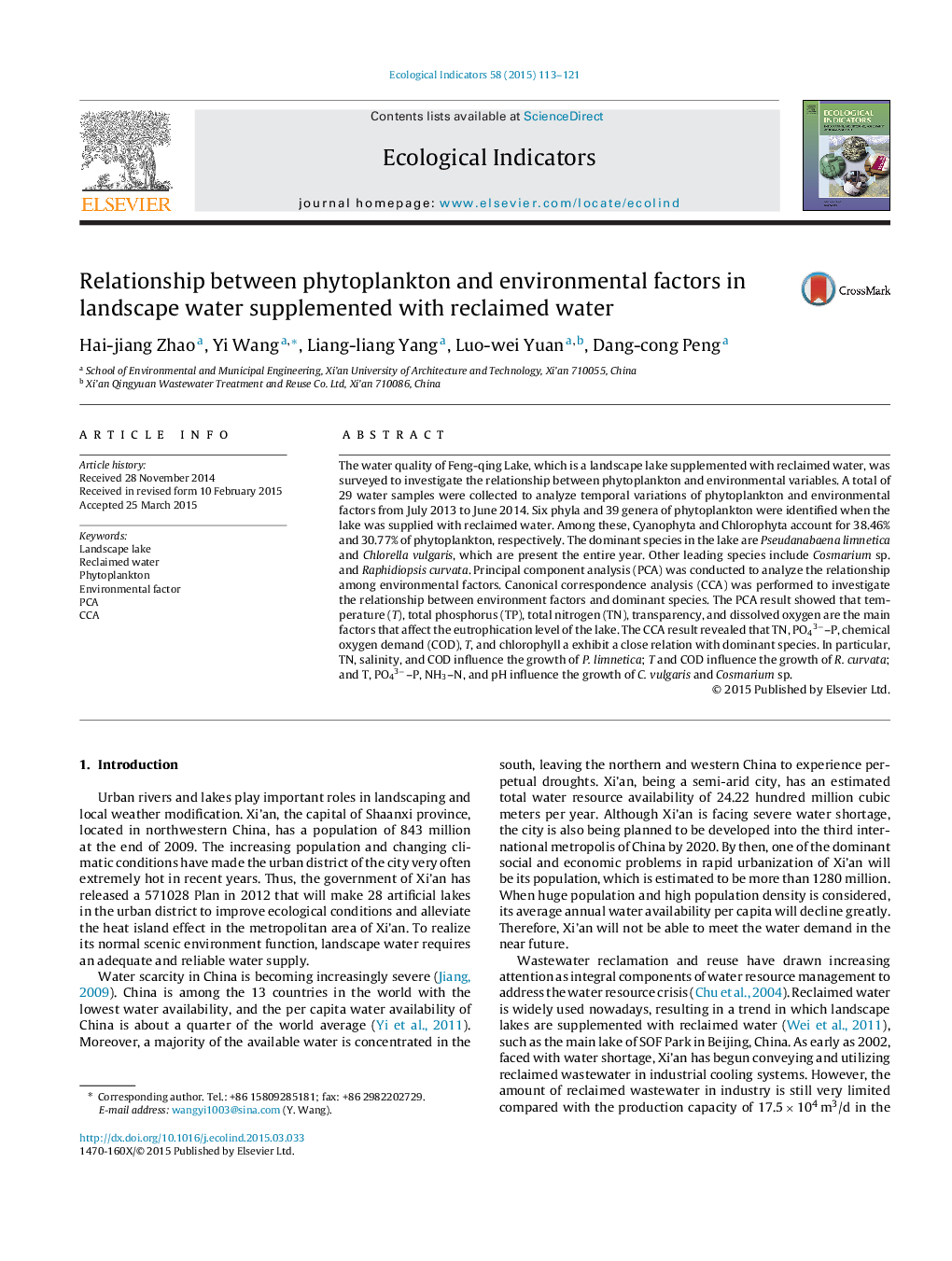| کد مقاله | کد نشریه | سال انتشار | مقاله انگلیسی | نسخه تمام متن |
|---|---|---|---|---|
| 5398756 | 1505894 | 2015 | 9 صفحه PDF | دانلود رایگان |
عنوان انگلیسی مقاله ISI
Photoluminescence and spectroscopic dependence of fluorophosphate glasses on samarium ions concentration and the induced defects by gamma irradiation
ترجمه فارسی عنوان
فوتولومینسانس و وابستگی طیفی عینک فلوئوروفسفات بر غلظت یون ساماریوم و نقص القا شده توسط اشعه گاما
دانلود مقاله + سفارش ترجمه
دانلود مقاله ISI انگلیسی
رایگان برای ایرانیان
کلمات کلیدی
موضوعات مرتبط
مهندسی و علوم پایه
شیمی
شیمی تئوریک و عملی
چکیده انگلیسی
Combined optical, FTIR and photoluminescence spectra of varying Sm3+ ions in NaF-AlF3-phosphate glasses were investigated before and after successive gamma irradiation. Optical (UV-visible) absorption of the base undoped glass reveals UV absorption which becomes broadened and strong with progressive gamma irradiation. The UV absorption of the undoped glass is related to unavoidable trace iron impurity (Fe3+) contaminated within the chemicals used for its preparation. Upon gamma irradiation, ferrous ions present in noticeable percent within the impurity due to the reducing nature of phosphate glass interact with positive holes during the irradiation process and are transformed to ferric ions through photochemical reactions and the additionally formed Fe3+ ions impart their characteristic strong absorption in the UV region. Sm3+ containing glasses show characteristic small peaks arranged into two regions from about 350 to 900 nm and from about 1000 to 1600 nm. Such absorption peaks are more distinct with the increase of Sm2O3 content. Most of the limited number of absorption peaks are due to transitions from the 6H5/2 level to the various excited 2s+1LJ levels. The majority of the transitions in the spectra are assumed to originate from induced electric dipole (ED) interactions with the selection rule âJâ¤6. The intense band 6P3/2â6H5/2 around 25,000 cmâ1 (~400 nm) is spin-allowed. The emission spectra of Sm2+ ions were recorded under the excitation wavelength of 402 nm for all prepared Sm2O3-containing glasses. The photoluminescence spectra show four emission lines, of which three consist of strong bands while the last line is a weak band. The wavelengths of the four luminescence peaks occur at about 560, 596, 642 and 702 nm and they are assigned to transitions from 4G5/2 to 6H5/2, 6H7/2, 6H9/2 and 6H11/2, respectively. The intensity of the emission spectra is observed to increase with the increase of Sm2O3 content. The optical spectra within the visible-near IR region and photoluminescence spectra of Sm2O3-doped glasses are found to be stable and show almost no variations after gamma irradiation especially when rare-earth ions are present in noticeable contents (1-3%). FTIR spectra of all the studied glasses reveal repetitive and characteristic vibrational bands mainly due to phosphate groups with abundant of Q2 and Q3 groups due to the high content of P2O5 (70 mol%). The introduction of 10% NaF and 20% AlF3 is observed to cause formation of mixed fluorophosphate groups (PO3F)2â. The formation of (AlPO)4 and/or (AlPO6) groups needs further justification by combined techniques. The increase of Sm2O3 content to 3% causes obvious increase of the IR absorption bands within the wavenumbers range of about 850-1400 cmâ1 due to suggested depolymerization effect. Gamma irradiation causes no distinct variations in the FTIR spectra due to suggested compactness through the formation of additional structural groups from AlF4 or AlF6.
ناشر
Database: Elsevier - ScienceDirect (ساینس دایرکت)
Journal: Journal of Luminescence - Volume 166, October 2015, Pages 295-303
Journal: Journal of Luminescence - Volume 166, October 2015, Pages 295-303
نویسندگان
M.A. Marzouk, Y.M. Hamdy, H.A. ElBatal, F.M. Ezz ElDin,
